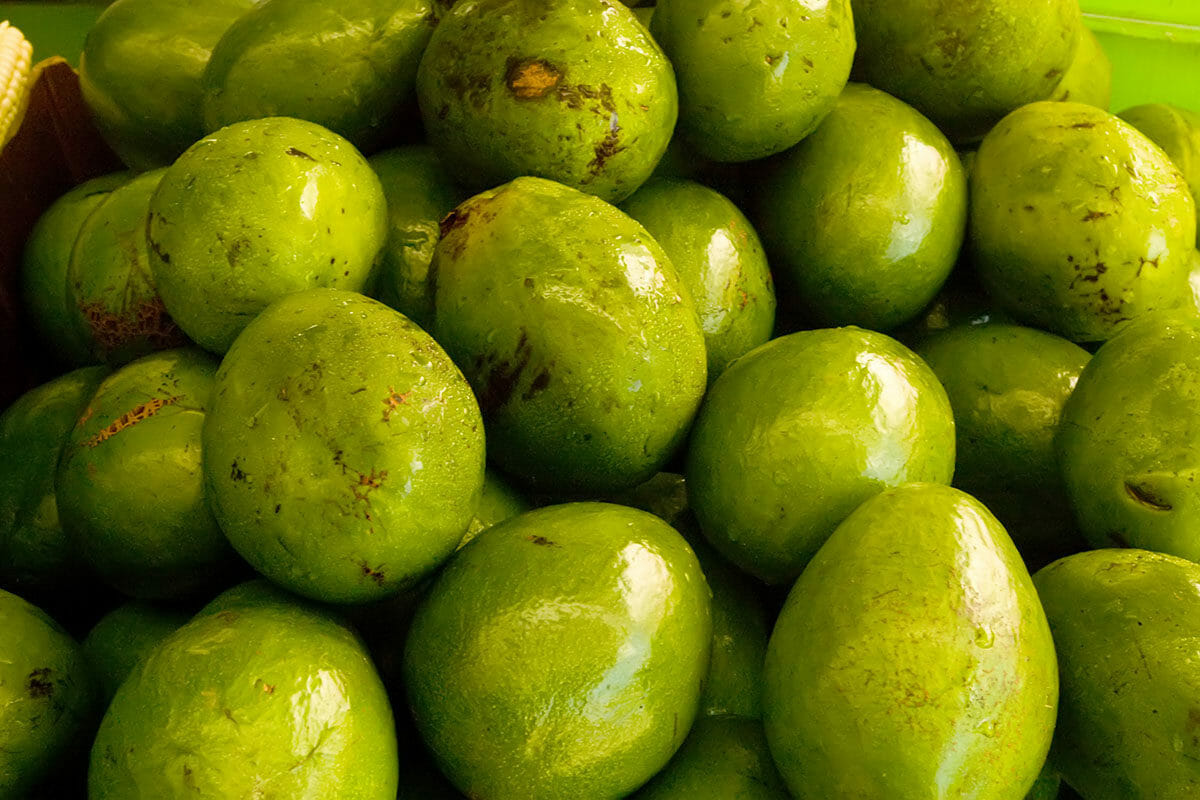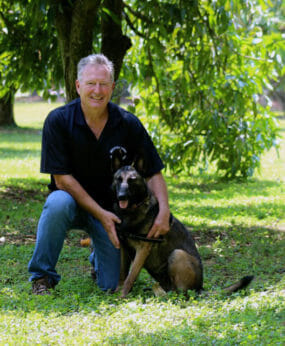Rescue Dogs May Help Save Florida’s Avocados from a Deadly Disease
Laurel wilt disease is threatening Florida’s $54 million avocado industry, but specially trained dogs might be able to help.
Rescue Dogs May Help Save Florida’s Avocados from a Deadly Disease
Laurel wilt disease is threatening Florida’s $54 million avocado industry, but specially trained dogs might be able to help.


Enter John Mills, one of those avocado farmers. The 71-year-old retired U.S. Army Colonel, who’s based in Redland, Fla., served three combat tours of duty before retiring in 1995 and isn’t one to wait around for someone else to solve his problems. Mills was discussing the laurel wilt issue over dinner with his wife Dr. DeEtta Mills, a microbiologist and head of the Forensics Department at Florida International University (FIU), and their friend and her FIU colleague, Dr. Kenneth Furton, who’s also the school’s provost. It occurred to the group that they just so happened to have the right mix of minds right there are the table to come possibly up with a solution. Right then and there, they devised a plan to take on the invasive fungus and save the avocados.
The key would be early detection. The beetle implants the fungus inside laurel trees to feed itself and its young. Once implanted, the fungus infects the tree’s sapwood, which tricks the tree into protecting itself by choking off its own water (and therefore supply of nutrients) until it wilts away and dies. The fungus works its way underground, spreading by grafting onto the roots of surrounding plants. Because avocado trees are grown close together, they’re particularly susceptible to this form of transmission. By the time a tree shows the telltale canopy of brown leaves at the top, an entire avocado grove could be infected – and written off as a loss.
“By the time a tree shows the telltale canopy of brown leaves at the top, an entire avocado grove could be infected.”
Dr. Furton, a canine olfaction expert, suggested dogs could be trained to detect the fungus by scent. Dr. Mills believed a DNA validation test for the fungus could confirm that the dogs had identified the correct one. The pair got to work. Their research (funded by the Florida Department Of Agriculture and Consumer Services) proved fruitful, and their findings became the basis for Innovative Detection Concepts (IDC).
All In a (Dog) Day’s Work
Mills started IDC in 2014 with three dogs sourced from a well-respected Mexican breeder who were taught to detect laurel wilt fungus: a Belgian Malinois, and two Dutch Shepherds. The dogs were trained to signal an infected tree by sitting near it until rewarded by their handler. A second person accompanies the handler to record the tree’s GPS location. The process is then repeated with a different dog to verify the results. The dogs work in fifteen- to twenty-minute shifts during warmer months, and up to forty-five minutes at a time when it’s cooler, before returning to an air-conditioned van to rest while the handler takes out a different dog. The rotation schedule allows the crew to work effectively for two hours.
“They love to work and the scent drives them to reward,” explains John Mills. “Our Malinois [named Cobra] is the best of the group, she’ll work forever and never slow down.”
In 2015, the program expanded to include rescue dogs, doubling the pool of certified detection dogs to six. Though each dog develops their own search style, they all share a toy drive that makes them adept at detection.
How Effective Are The Dogs?
In the best case, IDC is brought in as a preventative measure when laurel wilt has been detected in the area. Drones are used to do a preliminary search for brown leaves in larger acreages and trees that are visibly infected will be removed before the dogs are brought in.
“If it’s full-blown infection, the dogs are going to be saturated with the scent,” explains Mills, who says sniffing out the fungus is similar to sniffing out drugs. “If you have someone carrying a small quantity of cocaine, it’s easier to train the dogs to pinpoint that than it is a truckload of cocaine sitting outside.”
Once a perimeter of infection has been established, growers can submit wood samples to a lab to verify that laurel wilt fungus has been identified correctly before proceeding with a treatment plan.
“If it’s early enough, you get a 95 percent save rate. If it’s later, it’s down to the 50 percent range,” says Mills.
While necessary to contain the spread, the cost of treatment can be prohibitive. The beetle is attracted to distressed trees, so many are concerned there will be a surge in laurel wilt cases as a result of the physical damage caused by Hurricane Irma last September. Embattled farmers may decide to shift away from avocado production into other crops.
Despite this, John Mills is hopeful that the early detection protocol they developed at IDC can scale-up to face new challenges and buy scientists time to develop new ways to fight the fungus. Though IDC has stayed local to Florida, they’ve consulted with growers in both California and Mexico, where the avocado industries are exponentially larger. Though neither location has yet to face a serious outbreak, the fungus has reached eastern Texas and experts are focused on containment strategies to keep it from migrating further south and west to those major markets.
“I think it will be stopped but at what point is the question,” says Mills.
Follow us

This work is licensed under a Creative Commons Attribution-NoDerivatives 4.0 International License.
Want to republish a Modern Farmer story?
We are happy for Modern Farmer stories to be shared, and encourage you to republish our articles for your audience. When doing so, we ask that you follow these guidelines:
Please credit us and our writers
For the author byline, please use “Author Name, Modern Farmer.” At the top of our stories, if on the web, please include this text and link: “This story was originally published by Modern Farmer.”
Please make sure to include a link back to either our home page or the article URL.
At the bottom of the story, please include the following text:
“Modern Farmer is a nonprofit initiative dedicated to raising awareness and catalyzing action at the intersection of food, agriculture, and society. Read more at <link>Modern Farmer</link>.”
Use our widget
We’d like to be able to track our stories, so we ask that if you republish our content, you do so using our widget (located on the left hand side of the article). The HTML code has a built-in tracker that tells us the data and domain where the story was published, as well as view counts.
Check the image requirements
It’s your responsibility to confirm you're licensed to republish images in our articles. Some images, such as those from commercial providers, don't allow their images to be republished without permission or payment. Copyright terms are generally listed in the image caption and attribution. You are welcome to omit our images or substitute with your own. Charts and interactive graphics follow the same rules.
Don’t change too much. Or, ask us first.
Articles must be republished in their entirety. It’s okay to change references to time (“today” to “yesterday”) or location (“Iowa City, IA” to “here”). But please keep everything else the same.
If you feel strongly that a more material edit needs to be made, get in touch with us at [email protected]. We’re happy to discuss it with the original author, but we must have prior approval for changes before publication.
Special cases
Extracts. You may run the first few lines or paragraphs of the article and then say: “Read the full article at Modern Farmer” with a link back to the original article.
Quotes. You may quote authors provided you include a link back to the article URL.
Translations. These require writer approval. To inquire about translation of a Modern Farmer article, contact us at [email protected]
Signed consent / copyright release forms. These are not required, provided you are following these guidelines.
Print. Articles can be republished in print under these same rules, with the exception that you do not need to include the links.
Tag us
When sharing the story on social media, please tag us using the following: - Twitter (@ModFarm) - Facebook (@ModernFarmerMedia) - Instagram (@modfarm)
Use our content respectfully
Modern Farmer is a nonprofit and as such we share our content for free and in good faith in order to reach new audiences. Respectfully,
No selling ads against our stories. It’s okay to put our stories on pages with ads.
Don’t republish our material wholesale, or automatically; you need to select stories to be republished individually.
You have no rights to sell, license, syndicate, or otherwise represent yourself as the authorized owner of our material to any third parties. This means that you cannot actively publish or submit our work for syndication to third party platforms or apps like Apple News or Google News. We understand that publishers cannot fully control when certain third parties automatically summarize or crawl content from publishers’ own sites.
Keep in touch
We want to hear from you if you love Modern Farmer content, have a collaboration idea, or anything else to share. As a nonprofit outlet, we work in service of our community and are always open to comments, feedback, and ideas. Contact us at [email protected].by Ana Pelaez, Modern Farmer
June 25, 2018
Modern Farmer Weekly
Solutions Hub
Innovations, ideas and inspiration. Actionable solutions for a resilient food system.
ExploreExplore other topics
Share With Us
We want to hear from Modern Farmer readers who have thoughtful commentary, actionable solutions, or helpful ideas to share.
SubmitNecessary cookies are absolutely essential for the website to function properly. This category only includes cookies that ensures basic functionalities and security features of the website. These cookies do not store any personal information.
Any cookies that may not be particularly necessary for the website to function and are used specifically to collect user personal data via analytics, ads, other embedded contents are termed as non-necessary cookies.